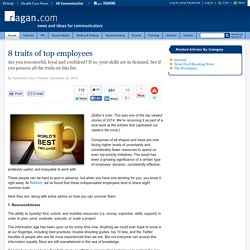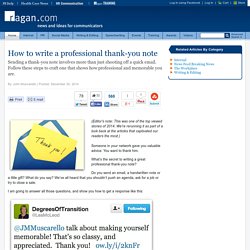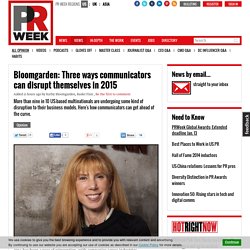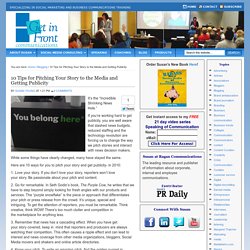

6 components every professional bio must have. 8 tips to make yourself an office standout. You’ve started your new job and seem to be settling in nicely.

You’ve put the finishing touches on your desk space, could easily ace a quiz of coworkers’ names and are long past sharing that embarrassing story at your first staff meeting. Maybe you’ve even impressed the CEO a time or two. While there’s good reason to celebrate that you’re excelling in your current role, now’s not the time to rest on your laurels. Just because you’re all settled in and no longer the “newbie” doesn’t mean you have to stop proving yourself and stepping out of your comfort zone.
Rocking your job responsibilities is key, but let’s face it, it’s no longer enough in today’s working world. So, what can you do to stand out? 1. 3. 4. 5. 6. 7. 8 traits of top employees. (Editor's note: This was one of the top viewed stories of 2014.

We're rerunning it as part of a look back at the articles that captivated our readers the most.) Companies of all shapes and sizes are now facing higher levels of uncertainty and considerably fewer resources to spend on even top-priority initiatives. The result has been a growing significance of a certain type of employee: dynamic, consistently effective, endlessly useful, and enjoyable to work with. These people can be hard to spot in advance, but when you have one working for you, you know it right away.
At ReWork, we’ve found that these indispensable employees tend to share eight common traits. Here they are, along with some advice on how you can uncover them: 1. The ability to (quickly) find, unlock, and mobilize resources (i.e. money, expertise, skills, support) in order to plan, pivot, evaluate, execute, or scale a project. The information age has been upon us for some time now. 12 pieces of LinkedIn advice you've (likely) never heard. Are you a lurker on LinkedIn?

Eighty percent of us are. We watch and read what's on the network, but we're not proactive. We don't use LinkedIn's newest and best features to our advantage. How to write a professional thank-you note. (Editor's note: This was one of the top viewed stories of 2014.

We're rerunning it as part of a look back at the articles that captivated our readers the most.) Someone in your network gave you valuable advice. You want to thank him. What’s the secret to writing a great professional thank-you note? Do you send an email, a handwritten note or a little gift? I am going to answer all those questions, and show you how to get a response like this: How did my professional thank-you note get that response?
I sent a handwritten note, which is extremely rare these days, and two helpful books. Thank-you notes are tricky to write. Let’s get into it. I recently spoke with Lea McLeod, the founder of Degrees of Transition, a career website that helps recent grads and mid-careerists navigate the job search. I took two pages of notes during our phone call (here’s why). During the call, she mentioned that she wanted to book more speaking gigs. Bloomgarden: Three ways communicators can disrupt themselves in 2015. 2014 has been a year of reinvention, with companies across industries transforming their business models to compete.

It included news shake-ups with the spinout of Time from Time Warner and social media consolidations such as the acquisition of WhatsApp by Facebook. Huge amounts of M&A in the healthcare space reached record levels – about $264 billion in 2014, roughly double that of 2013 – and the continued disruption of the technology space headlined by Hewlett-Packard’s announcement of plans to split into two. These transactions are just a snippet of the many dynamic transformations that companies are experiencing worldwide. According to Forbes, 93% of US-based multinationals are at some stage of undergoing or preparing for transformation. Similar patterns are driving global corporate shifts.
Reinvention is a critical element of success for businesses. There is a communications imperative that underpins the potential for success. 10 Tips for Pitching Your Story to the Media and Getting Publicity - Get In Front Communications. It’s the “Incredible Shrinking News Hole.”

If you’re working hard to get publicity, you are well aware that slashed news budgets, reduced staffing and the technology revolution are forcing us to change the way we pitch stories and interact with news decision makers. While some things have clearly changed, many have stayed the same. Everyone Could Have Been Happier If These 20 Things Were Never Forgotten. You may have heard the quote “All grown-ups were once children…but only few of them remember it.” from The Little Prince before, but have you ever really stopped to reflect on it?

There's a Word for That: 25 Expressions You Should Have in Your Vocabulary.